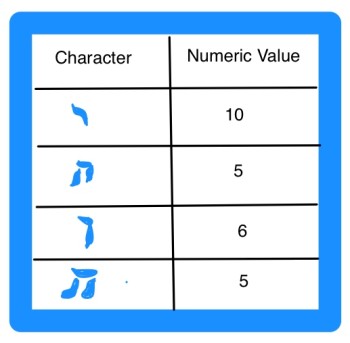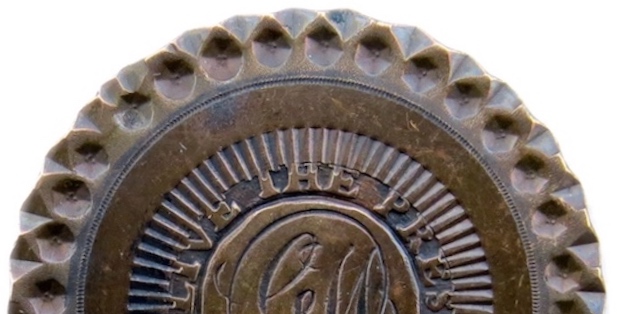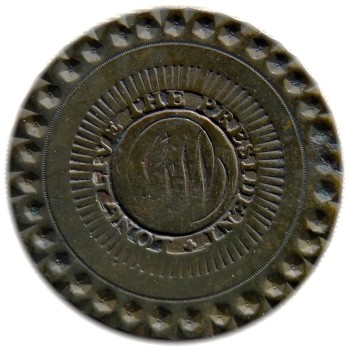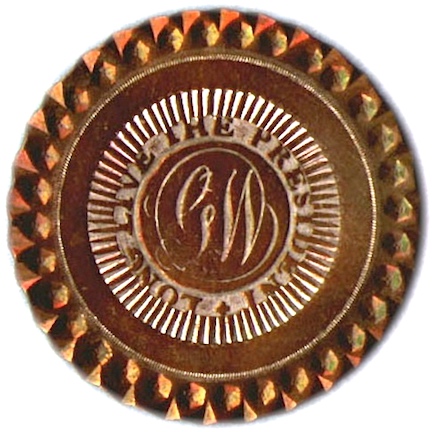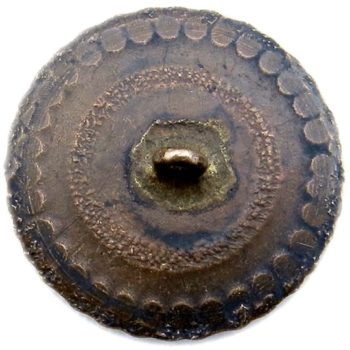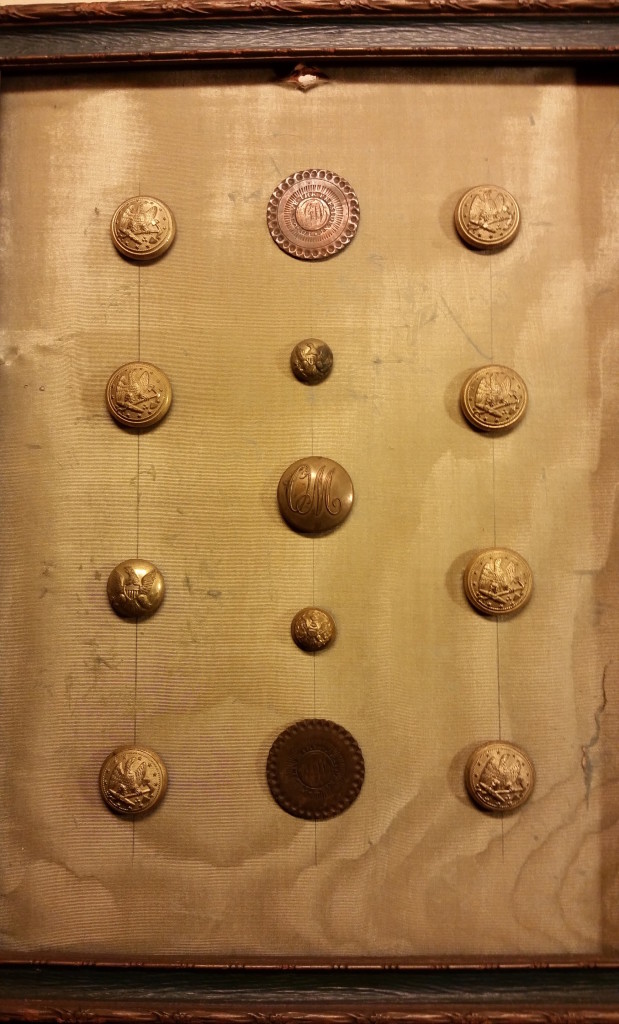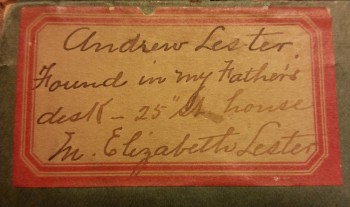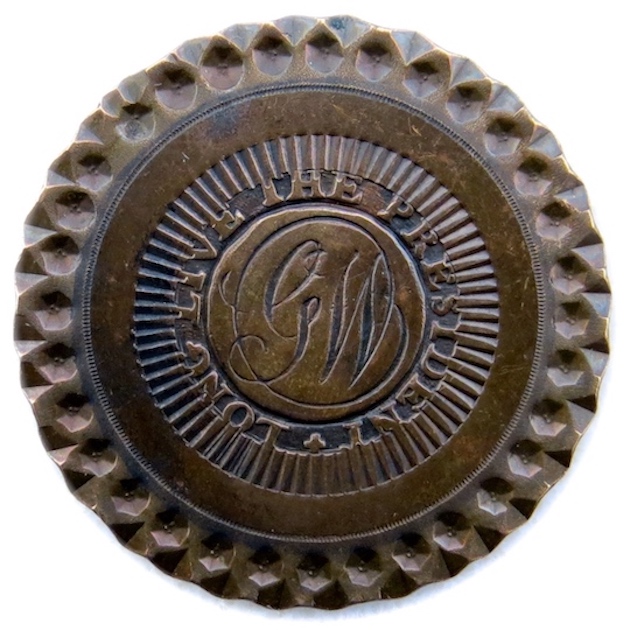 The Scottish Royal Culture’s Religious Honey Comb
The Scottish Royal Culture’s Religious Honey Comb
W/ Sovereignty using “E” and Numeric Numbers of God
~ The Isabela Collection ~
This is a Draft in Progress
GWI 7
THE “GW” MONOGRAM WITH A HONEYCOMB BORDER INDENTEES
This button is the works of Robert Scot and James Thackera. The button was made with the intent to give religious sovereignty to George Washington by using the letter “E” and using all ineffable names in numeric values of God. GWI 7 was crafted to include the Tetragrammaton using the Scottish Royal Culture design of 72 Regnal Jewels of Scotland as well as 72 triangular wedge shape Sun rays.
 GWI 7-A & SBV.2, GWI 7-B & SBV.2 THE “GW” MONOGRAM WITH A HONEY COMB BORDER INDENTEES: This button is the works of Robert Scot and James Thackera. GWI 7 was engraved in a steel die and then produced in brass and copper. Some brass variants were made with a gilt finish. This is a flat one-piece button with a soldered on loop shank for attachment. The Size for GWI 7-A & B is 31-32mm. The Size for GWI 7-A SBV.2 & GWI 7-B SBV.2 is 33mm. The Rarity Rating for all four varieties is R-7 or an RV-6 with undocumented specimens. GWI 7-A has 31 Honeycomb (Hexagonal) Legend Indentees, and 32-33, 3-Sided Pyramidal Shape Border Indentees. GWI 7-A SBV.2 has 32 Honeycomb (Hexagonal) Shape Legend Indentees, and 32 3-Sided Pyramid Shape Border Indentees. GWI 7-B has 32 Honeycomb (Hexagonal) Shape Legend Indentees, and 32 Three Sided Pyramid Shape Border Indentees. GWI 7-B SBV.1 has 31 Honeycomb (Hexagonal) Shape Legend Indentees, and 33 Three Sided Pyramid Shape Border Indentees. GWI 7-B SBV.2 has 33 Honeycomb (Hexagonal) Shape Legend Indentees, and 33 Three Sided Pyramid Shape Border Indentees. In the bottom of all the hexagonal legend indentees is the “Apex” which has 3 Raised Stipples. Circling the inner border is an incuse Oblong Stipple Ring. GWI 7-SBV.1 has 45 Thin Lined Sun Rays, and GWI 7-A SBV. 1 & 2 has 78 Wedge Shape Close-Spaced Reversed Sun Rays. GWI 7-B has 39 Thicker Lined Sun Rays. GWI 7-B SBV.1 & 2 has 78 Wedge Shape Close-Space Revered Sun Rays. The center of the button displays a Large Script GW Monogram with a flamboyant Colonial Swirl around both letters. Circling the Monogram is the Slogan, “Long Live The President” in all capital letters. There is a small raised Christian Cross on the bottom of the slogan’s well.
GWI 7-A & SBV.2, GWI 7-B & SBV.2 THE “GW” MONOGRAM WITH A HONEY COMB BORDER INDENTEES: This button is the works of Robert Scot and James Thackera. GWI 7 was engraved in a steel die and then produced in brass and copper. Some brass variants were made with a gilt finish. This is a flat one-piece button with a soldered on loop shank for attachment. The Size for GWI 7-A & B is 31-32mm. The Size for GWI 7-A SBV.2 & GWI 7-B SBV.2 is 33mm. The Rarity Rating for all four varieties is R-7 or an RV-6 with undocumented specimens. GWI 7-A has 31 Honeycomb (Hexagonal) Legend Indentees, and 32-33, 3-Sided Pyramidal Shape Border Indentees. GWI 7-A SBV.2 has 32 Honeycomb (Hexagonal) Shape Legend Indentees, and 32 3-Sided Pyramid Shape Border Indentees. GWI 7-B has 32 Honeycomb (Hexagonal) Shape Legend Indentees, and 32 Three Sided Pyramid Shape Border Indentees. GWI 7-B SBV.1 has 31 Honeycomb (Hexagonal) Shape Legend Indentees, and 33 Three Sided Pyramid Shape Border Indentees. GWI 7-B SBV.2 has 33 Honeycomb (Hexagonal) Shape Legend Indentees, and 33 Three Sided Pyramid Shape Border Indentees. In the bottom of all the hexagonal legend indentees is the “Apex” which has 3 Raised Stipples. Circling the inner border is an incuse Oblong Stipple Ring. GWI 7-SBV.1 has 45 Thin Lined Sun Rays, and GWI 7-A SBV. 1 & 2 has 78 Wedge Shape Close-Spaced Reversed Sun Rays. GWI 7-B has 39 Thicker Lined Sun Rays. GWI 7-B SBV.1 & 2 has 78 Wedge Shape Close-Space Revered Sun Rays. The center of the button displays a Large Script GW Monogram with a flamboyant Colonial Swirl around both letters. Circling the Monogram is the Slogan, “Long Live The President” in all capital letters. There is a small raised Christian Cross on the bottom of the slogan’s well.

A Personal Note to My Readers
The one thing I have learned about Robert Scot & Scottish Lodge Freemasonry in relation to George Washington inaugural buttons is that it rarely uses a symbol as a stand alone representation in it’s allusion; rather it shares an allusion with many other symbols. The button’s commonality of the allusion with other symbols is not always obvious to the button’s on-looker, and in many cases I found the commonality exists with an overlap of another symbol or allusion. Meaning, one allusion has many representations in the various teachings of Masonry. This multi-meaning allusion from Masonry ritual practices are combined with their education in Scottish Royal Culture and ancient religious connotations for Heraldry makes the Mosaic Puzzle greater for the artistic allusion in George Washington Inaugural and New Nation Tribute Buttons. One can deduce the goal of the Scottish-Rite Artisans was to make an expression that is designed to call something to mind without mentioning the meaning explicitly. For a Scottish Lodge brother the understanding of more allusions overlaps was a way to emulate his higher degree of education. For a Non-Mason this is seen as a Masonic method of purposeful misdirection or in-direction. For the common collector who is not a well studied Scottish Royal culture or Masonry, this is a passing reference which allows fellow fraternity brothers to understand the true intent of the message. For my website, I will reference this by just saying, “Hidden in Plain Sight.”
This is one of the most flamboyantly designed George Washington Inaugural Button that was ever created by the late 18th Century Scottish Lodge Artisans. Aside from GWI 24’s Heraldic Eagle with Scottish Jewel Shaped Border Indentees, this button posses an enormous amount of overlapping allusions. To begin we have the GWI 7’s Hexagonal legend’s 3 Stipple base. In Scottish Masonry this would stand for an aggregate number of meanings used in the instruction (33 degrees) of Masonry. The allusion overlap begins with foundational teachings within the 3 levels (Entered Apprentice, Fellow-Craft, Master Mason) to advance teachings one can only acquire through advanced learning degrees of a Master Mason.
To give a superficial example without violating my personal oath would be the Three Precious Jewels of Masonry. The Attentive Ear, the Instructive Tongue, and the Faithful Breast. This is a basic teaching on the Fellow-Craft Level. On a Master Mason level the “3” could represent the 3 assassins of Hiram Abif in the building of King Solomon’s Temple; or even the 3 Pillars located S,W & E. As this examples notes, the number “3” has multiple overlapping allusions to a bigger meaning (picture) with it’s various parts constantly adding to the meaning to give it more significance.
The artisan engravers knew how to skillfully incorporate these Masonic teachings with their advanced mathematical education in geometry to use in their engraving applications, hence our GWI & NNT buttons. The part that must be emphasized is the extension of their loyalty to the (present) Scottish Royal bloodline in which their loyalty is “unwavering.” This in-corperation is presented in their ideas and views of the current social and political ideas (1789) for the New Republic in America. Meaning, the Three Stipple’s meaning in Scottish Royal culture would represent the Royal House of Stuart’s sovereign authority to be King of Scotland, England, and Ireland.
The 72 Honeycomb Hexagonal Legend Border Indentees is a crowning achievement in mathematics that was only understood by very few people in 1789. This specific geometrical cut and understanding can only be accomplished by years of study under the tutelage of a Master Operative Mason. At this point, I am not at Liberty to give my knowledge freely, but with the internet, I would invite serious collectors to begin their journey with the Tetragrammaton I drew below, and ADVANCE from there. What i can say, is that this is a religious attribution by the Artisans that gives and grants an authoritative Religious Heraldry symbol into the incorporation of the George Washington inaugural (GWI 7) button. As with all GWI & NNT symbols, their is several overlapping allusions that propagates the brotherhood of Scottish-Rite Masonry. This could be as simple as 72 being the number of maximum companions in addition to principles and scribes in the Royal Arch Chapter of Masonry.
Hebrew Numeric Values
Represented on GWI 7 A & B’s
Honeycomb Border Indentees
Each Hebrew Character in the Tetragrammaton represents a numerical value.
Based upon the numerical values of the Hebrew characters, 72 would represent
*All the ineffable names of God.
The calculation would be as follows:
10 x 4 = 40 / 5 x 3 = 15 / 6 x 2 = 12 / 5 x 1 = 5
Take all the sums and add together:
40 + 15 + 12 + 5 = 72
Last note, on the GWI Artisan’s accomplishment of transferring a geometry application in their various symbol engraving cuts. These GWI Artisan engravers mastered the skill of using their knowledge in math to properly cut Hexagonal Legend indentees in-conjuntion with Pyramidal Edge Borders. This is an incredible feat for that era. In my understanding of geometry, a hexagonal pyramid is a pyramid with a hexagonal base, upon which are erected six-triangular faces that meet at a point. This point is known as the “Apex.” A right “Hexagonal Pyramid” with a regular hexagon base has C6v symmetry. A right “Regular pyramid” is one that has a regular polygon as its base. Meaning the apex is “Above” the center of the base, so that the apex, the center of the base, and any other vertex form a right triangle as the Edge Border Pyramids show in GWI 7! Meaning, this demonstrates an advanced use and understanding of mathematics that is symbolized by the Scottish-Rite Master Artisans. I believe that GWI 7 demonstrates the highest math application out of any GW inaugural or NNT button.
Operative Mason Wedges or Sun Rays. As with all symbols on GWI 7, this specific symbol has a multi-combination allusion that has significance in both Scottish-Rite Masonry, and Scottish Royal culture that dates back to ancient times. What makes this fascinating is the two different depictions used. One is a simple line, and one is a “reverse” builder’s wedge. Another important overlapping factor to this allusion is the chosen number of rays or wedges that acts as a representative of the artisan’s multi-meaning allusion. I am going to start with the reverse direction of the wedges themselves. This is an allusion to the social, economic, and political control of the American Scottish Royal family bloodlines that signify their control in America through George Washington as President. (My proof would be through the established world financing though the banking industry in the 18th century). Anyway, one can just look at a few of the Scottish propagations by George Washington himself in everyday life. First, one has to take account that he was a Master Mason (More importantly viewed as a brother) in the most influential “Jacobite”strong-hold of social, political, and economic ideas for the New Republic. This was before, during, and after the American Revolution. George Washington’s chosen military, and social event hat was a Scottish Cockade with a Bonnie Prince Charlie white 5 petal rose that adorned the front. Thirty-Three of his Revolutionary War Generals hailed from this lodge of brothers. So, without giving more of a Scottish emulation laundry list, let us end here with the thoughts i state above and move back to the symbolism on the buttons and their meanings.
The Letter Tops Were Cut To Be Integrated-in The Sun Ray Design
GWI 7 Specimens
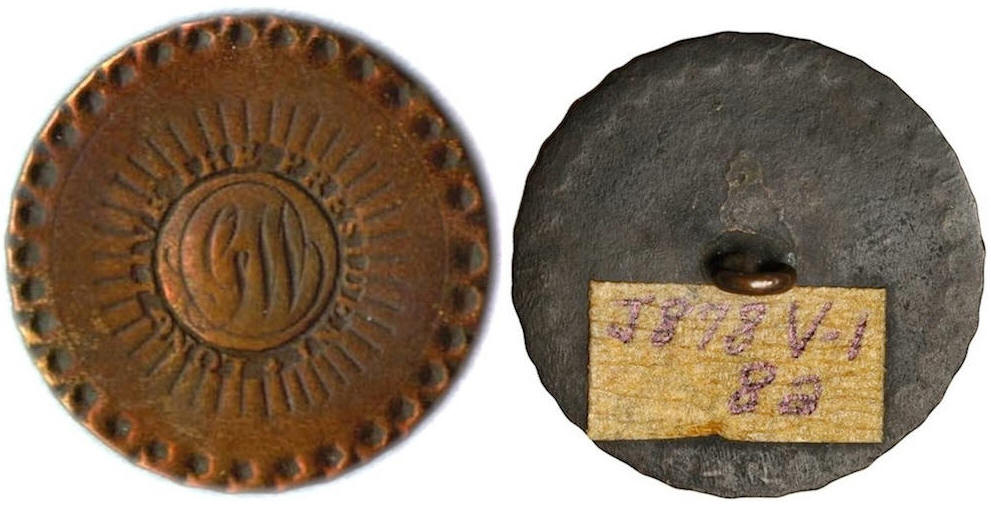
GWI 7-A THE “GW” MONOGRAM WITH 32 HEXAGONAL LEGEND INDENTEES
Color: A Reddish Brown with Some Gilt Flair.
Metal: Flat, 1-Piece, Stamped Design W/ Raised Slogan Letters, Brass W/ Gold Wash Finish.
Size: 31.6mm. 74.0 Grains.
Rarity: R-7
Variety Type: 32 Hexagonal Legend Indentees / 32 3 Sided Pyramidal Shape Border Indentees.
Present Condition: An Excavated Specimen, A Strong Planchet Condition, A Strong Impressions Remains.
Obverse Button Analysis:
Reverse Button Analysis: This is a flat one-piece button with a soldered on loop shank. The shank is original, straight and intact. The surface shows some porous areas, and has an impression ring from the die stamp.
Library Records Has Limited Information WI 7 A-1:
History: Yes Recorded Sales Price: Yes
Current Button Owner and Location: Yes
Roger S. Collection 2012 to 2018-Present
Stacks re-sold again in January 2012
Harold Cobb/Descendants 1951 to 2003.
Purchased from the Hubbards in 1951.
GWI 7-A SBV.2 THE “GW” MONOGRAM 33 HEXAGONAL LEGEND INDENTEES
Color: A Coppery-Brown, not an Olive Green.
Metal: Flat, 1-Piece, Stamped Design with Raised Slogan Letters, Brass W/ Gold Wash Finish.
Size: 33mm. Coat Size.
Rarity: R-6
Variety Type: 33 Hexagonal Legend Indentees /32 3-Sided Pyramid Shape Border Indentees /78 Wedge Shape Close Spaced Revered Sun Rays.
Present Condition: A Non Excavated Specimen, Exceptional Planchet Condition, A Strong Impression Remains.
Obverse Button Analysis: This button was handed-down through the generations as a family heirloom of the Lester family. This is one of two specimens that was found by Elizabeth Lester in her father’s desk draw during the 19th Century. It is unknown how Andrew Lester (1813-1889) acquired the two GWI 7 SBV.2 specimens. Also, I was not able to confirm that Andrew inherited this from a period-era family member who might purchased it during the celebratory event of 1789. From my interview with the current family member, I learned that Andrew Lester’s relatives first came to America in 1600. The button was framed around 1850-60’s while living in NYC. framed along with the 2 GWI 7 SBV.2 specimens was 7 Civil War period Federal Navy buttons (NA-227-A?), 3 Civil War Period Federal General Service buttons, and 1 State Infantry Militia button as the center piece..lol. The buttons appear in excellent condition with the shanks reportedly firmly attached to the frame itself. Unfortunately, the GW Monogram is partially worn into the surface. This most likely was the result from the wearer’s thumb fastening and unfastening the button. The Slogan’s letters provide a clear readable image with strong letter lines. The Christian Cross at the bottom of the slogan’s well is nicely raised and easy to see. The 72 Close Spaced Wedge Shaped Sun Rays are easily definable in shape. The Oblong incuse Stipple Ring is nicely inset, and only shows a little wear on the fastening side. The 33 Hexagonal Legend Indentees provide a clear image of it’s pyramidal shape as well as it’s Apex base that houses 3 raised Stipples. The 32 Three-Sided Pyramidal Shape Border Indentees provide an unblemished presentation.
Reverse Button Analysis: This is a flat one-piece button with a soldered on loop shank. The shank is reportedly original, straight and intact.
Library Records Has Limited Information WI 7 A SBV.2:
History: Yes Recorded Sales Price: Family Heirloom
Current Button Owner and Location: ~ Ohio ~
The Lester Family 2018-Present
GWI 7-B THE “GW” MONOGRAM WITH 32 HEXAGONAL LEGEND INDENTEES AKA “THE GRANT”
Color: A Beautiful Natural Light Coppery Brown Color, with a Splash of Orange for Darkness.
Metal: Flat, 1-Piece, Stamped Design W/ Raised Slogan Letters, Brass W/ Gold Wash Finish.
Size: 32mm.
Rarity: R-7
Variety Type: 32 Hexagonal Legend Indentees /32 3-Sided Pyramid Shape Border Indentees /72 Wedge Shape Close Spaced Revered Sun Rays.
Present Condition: A Non Excavated Specimen, Excellent Planchet Condition, A Strong Impression Remains.
Obverse Button Analysis: This is in Mint Condition, and was graded extremely fine to about uncirculated. The surface is consistent to the original manufacture’s design casting. The planchet is solid and flat and shows no waviness or bends. The surface is flat and smooth, with no scratches or abrasions affecting the designs. The impressed “GW” Monogram’s letters are clear and readable, with good character impressions throughout most areas of the letters. The “G” does exhibit a weak impression for the lower curl, and tail loop area, but this is probably due to the original stamping process with the die. The Colonial Swirl off the “W” is fluid, but does have a break in the swirl by the lower half of the “G”. This also could be due to a weak strike impression. The Roman Font Capital letters that encircle the Monogram is nicely elevated, and shows no smooth wear to the letters. The separation Cross for the beginning and ending of the Slogan is strong, and has nice elevation with good angled lines. The incuse lines for the Sun’s Rays are sharp, and nicely distinct of one another with no wear or bleeding into each other. The narrow encircling open field is nice and clean, and has no foreign blemishes to speak of. The outer Stamped Ring is nicely impacted, and shows good inner line definition. The thirty-one Hexagonal / Pyramidal Border Punch-Marks have a deep stamp, and have excellent shape and curvature. This is a wonderfully designed button, which is truly a jewel in anyone’s GW Collection.
Reverse Button Analysis: This is a flat one-piece button with a soldered on loop shank. The shank is original, straight and intact with no blemishes to the surface.
Library Records Has Limited Information WI 7 B-1:
History: Yes Recorded Sales Price: Yes
Current Button Owner and Location: No
Harold Cobb/Descendants 1959 to 2003.
Purchased from C.A. Means (Bronson) in 1959.
This was found in Waterbury, Connecticut in 1959 in an old metal salve box. The button had a faded thin White ribbon of Masonic significance attached to the shank.
Research concluded that this button was possibly from a Wedding Coat in 1796.~
In other instances, GW Buttons have been identified with Wedding Coats of this period 1789 to 1800.~
GWI 7-B SBV.1 THE “GW” MONOGRAM 31 HEXAGONAL LEGEND INDENTEES
Color: A Deep Rich Coppery-Brown.
Metal: Flat, 1-Piece, Stamped Design with Raised Slogan Letters, Brass W/ Gold Wash Finish.
Size: 32.7mm. Coat Size.
Rarity: R-7
Variety Type: 31 Hexagonal Legend Indentees /33 3-Sided Pyramid Shape Border Indentees /78 Wedge Shape Close Spaced Revered Sun Rays.
Present Condition: A Non Excavated Specimen, A Strong Planchet Condition, An Exceptional Impression Remains.
Obverse Button Analysis: The 72 Close Spaced Wedge Shaped Sun Rays show an unblemished definable shape. The Oblong incuse Stipple Ring is nicely inset and clearly defined. The 31 Hexagonal Legend Indentees clearly show the pyramidal walls forming the overall Hex shape. All 31 Hex Apex bases show the 3 raised Stipples. All 33 Three-Sided Pyramidal Shape Outside Border Indentees provide an remain in unblemished presentation.
Reverse Button Analysis: This is a flat one-piece button with a soldered on loop shank. The shank is original, straight and intact. Strike-through Reverse.
Library Records Has Limited Information WI 7-B SBV.1:
History: Yes Recorded Sales Price: Yes
Current Button Owner and Location: ~ New York ~
The RJ. Silverstein’s Isabela Collection
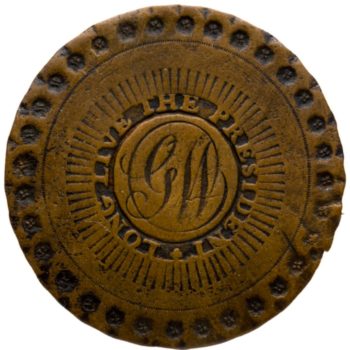

GWI 7-B THE “GW” MONOGRAM WITH 32 HEXAGONAL LEGEND INDENTEES AKA “THE GRANT”
Color: A Soft Leather Brown W/Charcoal Design Background.
Metal: Flat, 1-Piece, Stamped Design W/ Raised Slogan Letters, Brass W/ Gold Wash Finish.
Size: 32mm.
Rarity: R-7
Variety Type: 32 Hexagonal Legend Indentees /32 3-Sided Pyramid Shape Border Indentees /72 Wedge Shape Close Spaced Revered Sun Rays.
Present Condition: A Non Excavated Specimen, Copper Planchet Remains Strong, A Strong Impression Remains.
Obverse Button Analysis: This is in Good Condition. The planchet is solid and flat for the most part, but does show a bend or slight twist around the 4:00 position. and shows no waviness or bends. The surface is slightly porous, but not with no scratches or abrasions affecting the inner designs. The impressed “GW” Monogram’s letters are clear and readable, with good character impressions throughout most areas of the letters. The “G” retains a nice strike impression except for the lower curl before the tail loop area. This could probably due to the original stamping process with the die. The Colonial Swirl around the “W” is fluid, but has a shallow impression under the GW. The Roman Font Capital letters that encircle the Monogram is nicely elevated, and shows no smooth wear to the letters. The separation Cross for the beginning and ending of the Slogan is strong, and has nice elevation with good angled lines. The incuse lines for the Sun’s Rays are sharp, and nicely distinct of one another with no wear or bleeding into each other. The narrow encircling open field is for the most part nice and clean. The outer Stipple Ring is nicely impacted, and shows good inner line definition. The thirty-one Hexagonal / Pyramidal Border Punch-Marks still retains a good stamp.
Reverse Button Analysis: This is a flat one-piece button with a soldered on loop shank. The shank is replaced with a T-Bar Pin to be worn by one of the previous owners.
Library Records Has Limited Information WI 7 B-2:
History: Yes Recorded Sales Price: Yes
Current Button Owner and Location: No

GWI 7-? THE “GW” MONOGRAM WITH HEXAGONAL LEGEND INDENTEES
Color: A Silvery Grey
Metal: Stamped Copper with Raised Motto Lettering.
Size: 31mm.
Rarity: R-7 (An unknown sub-variety)
Variety Type: 36 Hexagonal Punch Marks on Border.
Present Condition: An Excavated Example, Poor Planchet, Poor Impressions.
Obverse Button Analysis: This was a difficult button to evaluate because of the unclear designs. The button was auctioned as either GWI 6 or GWI 7. Even though it shares GWI 6-A’s number of 36 punch marks on the border, i felt that they were more Hexagonal in shape as GWI 7s, and also saw no signs of any raised cross within the indents. Without hands-on examination, i would not be able to tell if this button ever had rays. But for symmetrical purposes, the rays would be wide space to be proportional to the punch marks. The copper planchet is slightly bent from the middle to the 1 o’clock position. There button shows metal fatigue, decay and deterioration. The surface is coarse with porous areas throughout. The Script “GW” Monogram is worn flat into the surface, and only shows remnants of it’s past image. The stamped ring still shows good depth from a strong strike. The inner Banner Well is completely corroded, and shows no traces of any kind of impression. The Roman Font Capital Block Letters are also decayed into the surface without any clear letter images. The Rays are completely absent from the surface. The stippled Border outside the field still shows an image, but is flat and smooth in most spots. The unique 36 hexagonal punch marks still show an outline, but are pretty much decayed. On a positive note, its a surviving example of the ultra rare GWI 7, so it should find a home with a collector.
Reverse Button Analysis: This is a flat one-piece button with a soldered on loop shank. The shank is reported to be original, and intact, but bent over. No other information is known.
Library Records Has Limited Information WI 7 ?-1:
History: Yes Recorded Sales Price: Yes
Current Button Owner and Location: No
GWI 7-A SBV.2 THE “GW” MONOGRAM WITH 33 HEXAGONAL LEGEND INDENTEES
Color: A Dark Coppery-Brown, not an Olive Green.
Metal: Flat, 1-Piece, Stamped Design W/ Raised Slogan Letters, Brass W/ Gold Wash Finish.
Size: 33mm. Coat Size.
Rarity: R-6
Variety Type: 33 Hexagonal Legend Indentees /32 3-Sided Pyramid Shape Border Indentees /72 Wedge Shape Close Spaced Sun Rays.
Present Condition: A Non Excavated Specimen, Exceptional Planchet Condition, A Strong Impression Remains.
Obverse Button Analysis: This button was handed-down through the generations as a family heirloom of the Lester family. This is one of two specimens that was found by Elizabeth Lester in her father’s desk draw during the 19th Century. It is unknown how Andrew Lester (1813-1889) acquired the two GWI 7 SBV.2 specimens. Also, I was not able to confirm that Andrew inherited this from a period-era family member who might purchased it during the celebratory event of 1789. From my interview with the current family member, I learned that Andrew Lester’s relatives first came to Plymouth Colony, MA in 1638, from Yorkshire England. He settled in Green Harbor, MA, and was one of the founders of Glouster, MA. The button was framed around 1850-60’s while living in NYC. framed along with the 2 GWI 7 SBV.2 specimens was 7 Civil War period Federal Navy buttons (NA 227-A?), 3 Civil War Period Federal General Service buttons, and 1 State Infantry Militia button as the center piece..lol. The buttons appear in excellent condition with the shanks reportedly firmly attached to the frame itself. Unfortunately, the GW Monogram is partially worn into the surface. This most likely was the result from the wearer’s thumb fastening and unfastening the button. The Slogan’s letters provide a clear readable image with strong letter lines. The Christian Cross at the bottom of the slogan’s well is nicely raised and easy to see. The 72 Close Spaced Wedge Shaped Sun Rays are easily definable in shape. The Oblong incuse Stipple Ring is nicely inset, and only shows a little wear on the fastening side. The 33 Hexagonal Legend Indentees provide a clear image of it’s pyramidal shape as well as it’s Apex base that houses 3 raised Stipples. The 32 Three-Sided Pyramidal Shape Border Indentees provide an unblemished presentation.
Reverse Button Analysis: This is a flat one-piece button with a soldered on loop shank. The shank is reportedly original, straight and intact.
Library Records Has Limited Information WI 7 A SBV.2:
History: Yes Recorded Sales Price: Family Heirloom
Current Button Owner and Location: ~ Ohio ~


GWI 7-? THE “GW” MONOGRAM WITH HEXAGONAL LEGEND INDENTEES
Color: A Wooded Brown W? Green Encrustations
Metal: Stamped Copper with Raised Motto Lettering.
Size: 31mm.
Rarity: R-7 (An unknown sub-variety)
Variety Type: 36 Hexagonal Punch Marks on Border.
Present Condition: An Excavated Specimen, Poor Planchet Condition, Poor Impressions Remains.
Obverse Button Analysis: This was a difficult button to evaluate because of the unclear designs.
Reverse Button Analysis: This is a flat one-piece button with a soldered on loop shank. The shank is reported to be original, and intact, but bent over. No other information is known.
Library Records Has Limited Information WI 7 ?-1:
History: Yes Recorded Sales Price: Dug
Current Button Owner and Location: Maine
Dug By Alexander Blasik in Maine 2020
